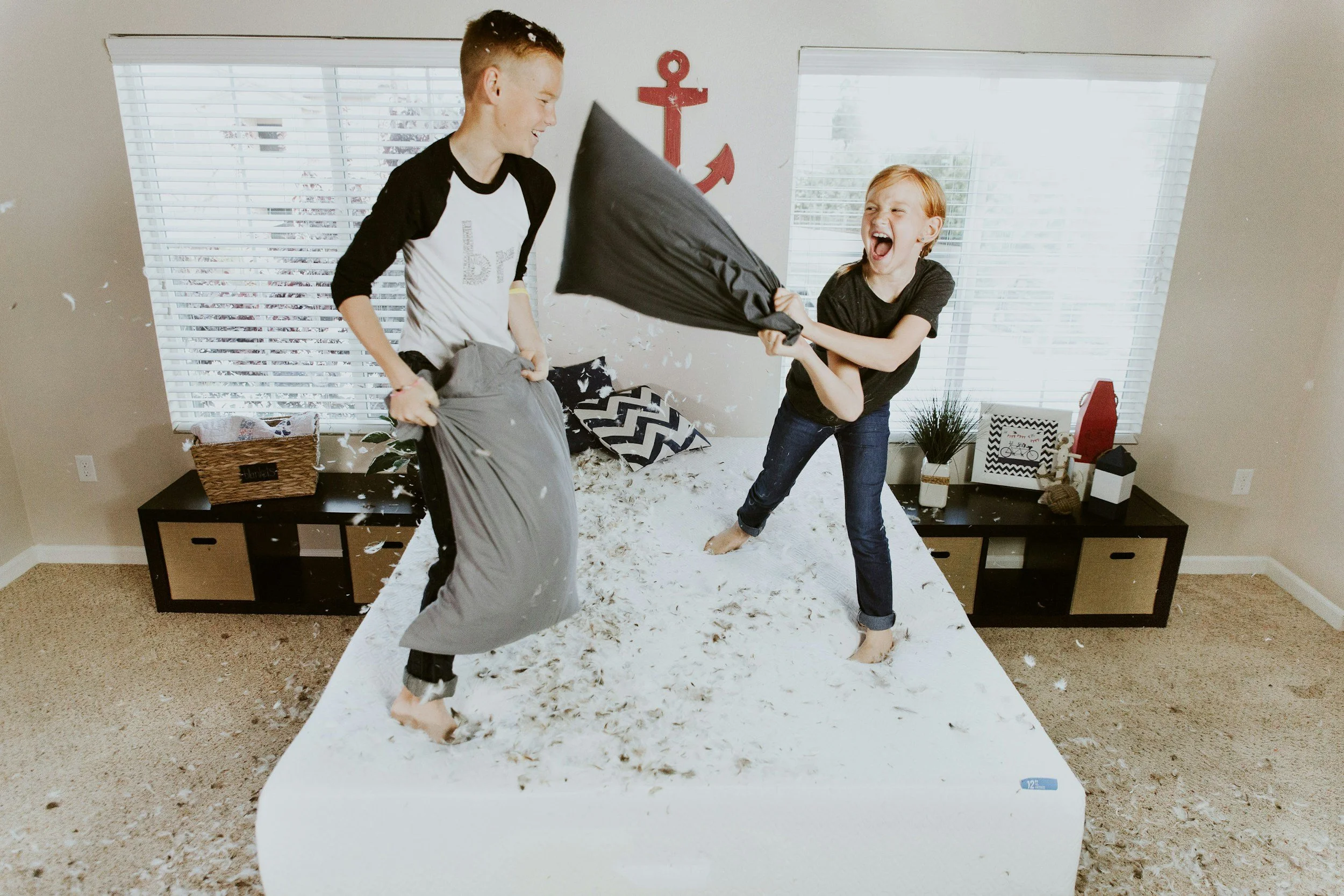"Go Clean Your Room!"
“Go clean your room!” It sounds simple enough, and many of us even remember our parents using that same phrase on us when we were kids. But if you find yourself constantly telling your child to clean their bedroom or their playroom and don't see results, you might be overlooking the key issue. As adults, we generally know that “clean up” means to tidy a space and how to go about that tidying. Even if we hate doing it, we can eventually get the job accomplished. But it’s important to remember children don’t have all that life experience we have, so when you say, “Go clean up”, they most likely don’t have any idea what steps to take to achieve that goal.
Teaching your kids how to tidy a space is like teaching them how to ride a bike or how to read; it takes time and practice and lots of little lessons that eventually make up the big picture. Learning to tidy and take care of their own space is an important life skill that builds independence, confidence, and responsibility, and helps create a calm environment for them to thrive in.
Below are useful tips to help teach your child how to tidy their room and keep them on track for a less cluttered space.
Set Clear and Realistic Expectations
Children need clear directions and age-appropriate expectations for tidying. Start by explaining exactly what “clean” or “tidy” means to you—show them photos or demonstrate what a tidy room looks like. Use specific language (“books go on the shelf,” “clothes go in the hamper”) instead of general commands.
Break Tasks Into Manageable Steps
Big jobs can be overwhelming for kids. Break the process into smaller tasks, such as:
Pick up toys and put them in bins
Put dirty clothes in the hamper
Place books on the shelf
Make the bed
Checklists, chore charts, or pictures of each step can help children remember what to do and track their progress (steps with pictures are especially beneficial for children with ADHD).
Make Organization Kid-Friendly
Involve your child in setting up the organized system, so they feel ownership and know where everything belongs. Including children in creating organizing systems (like choosing storage bins or labeling them) helps them create a sense of ownership and responsibility. Clear labeling (photos or simple words), placing storage within reach, and making sure everything has a designated spot will make it easier for them to put items away.
Create a Routine and Model the Process
Set a regular tidying schedule—like Saturday mornings or fifteen minutes before bedtime—so tidying becomes a habit. Tidy alongside your child at first to demonstrate, then gradually step back as they become more independent.
Motivation and Support
Use positive reinforcement, timers, music, or games (like "Beat the Clock") to make tidying fun and motivating. Model organizing behavior and demonstrate how you keep your things tidy, and encourage them to adopt similar habits.
Declutter Regularly
Fewer belongings make it easier for kids to keep their rooms tidy. Go through the room together every few months, helping your child decide what to keep, donate, or toss. Teach them the value of letting go of things they don’t use.
Celebrate Success
Positive reinforcement motivates kids. Celebrate when they complete a tidying session, whether with a small treat, extra playtime, or simply lots of praise. Over time, these routines and habits will help your child take pride in their space and ability to stay organized.
Remember, for a child, learning to tidy is like learning anything else. Start small and simple, and slowly they’ll be able to tackle the entire job. By teaching your children to tidy their room you are arming them with important skills and setting them up for success in adulthood! By making the process accessible and fun, your child will learn how to build healthy habits that they’ll take with them for the rest of their lives.





